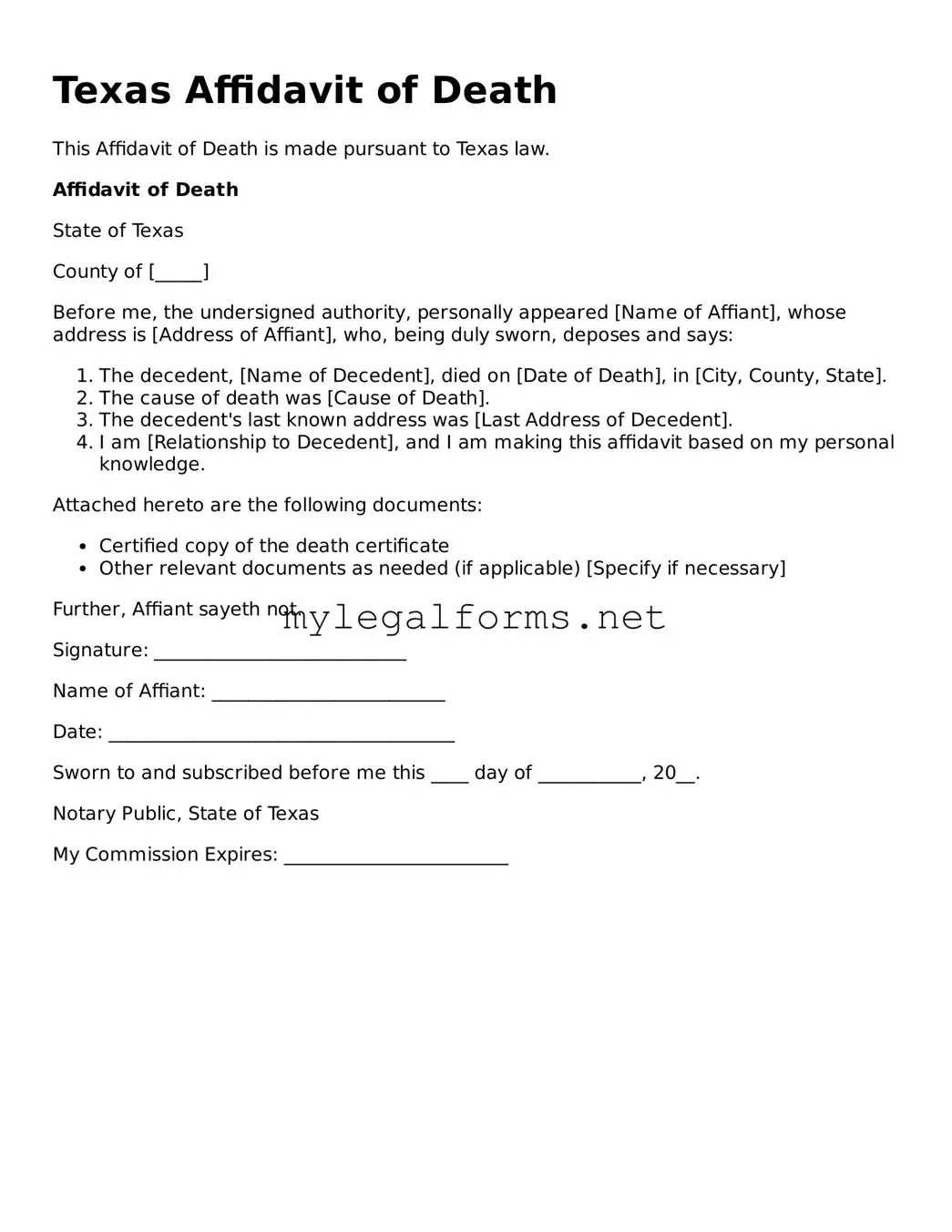Texas Affidavit of Death
This Affidavit of Death is made pursuant to Texas law.
Affidavit of Death
State of Texas
County of [_____]
Before me, the undersigned authority, personally appeared [Name of Affiant], whose address is [Address of Affiant], who, being duly sworn, deposes and says:
- The decedent, [Name of Decedent], died on [Date of Death], in [City, County, State].
- The cause of death was [Cause of Death].
- The decedent's last known address was [Last Address of Decedent].
- I am [Relationship to Decedent], and I am making this affidavit based on my personal knowledge.
Attached hereto are the following documents:
- Certified copy of the death certificate
- Other relevant documents as needed (if applicable) [Specify if necessary]
Further, Affiant sayeth not.
Signature: ___________________________
Name of Affiant: _________________________
Date: _____________________________________
Sworn to and subscribed before me this ____ day of ___________, 20__.
Notary Public, State of Texas
My Commission Expires: ________________________
